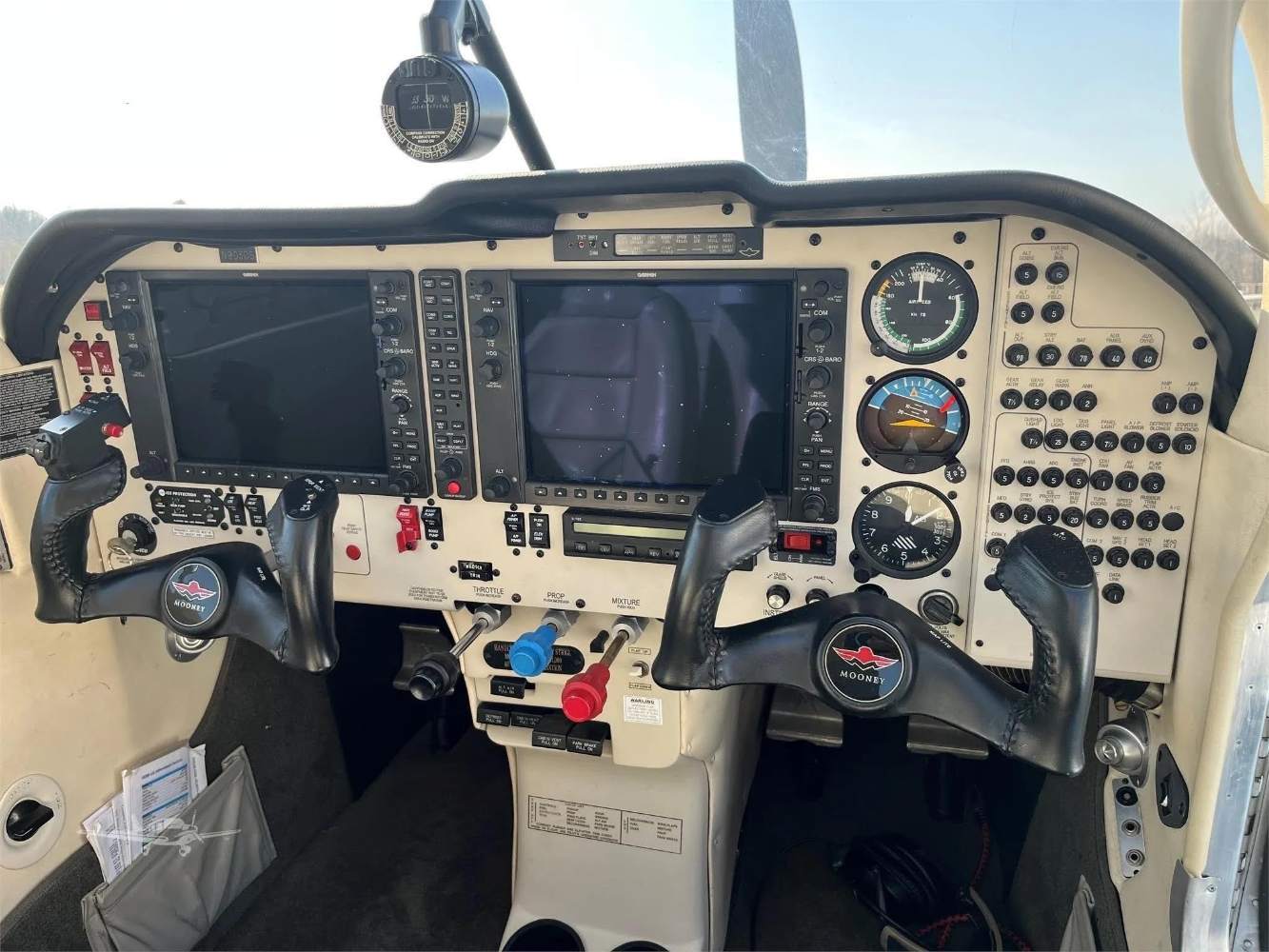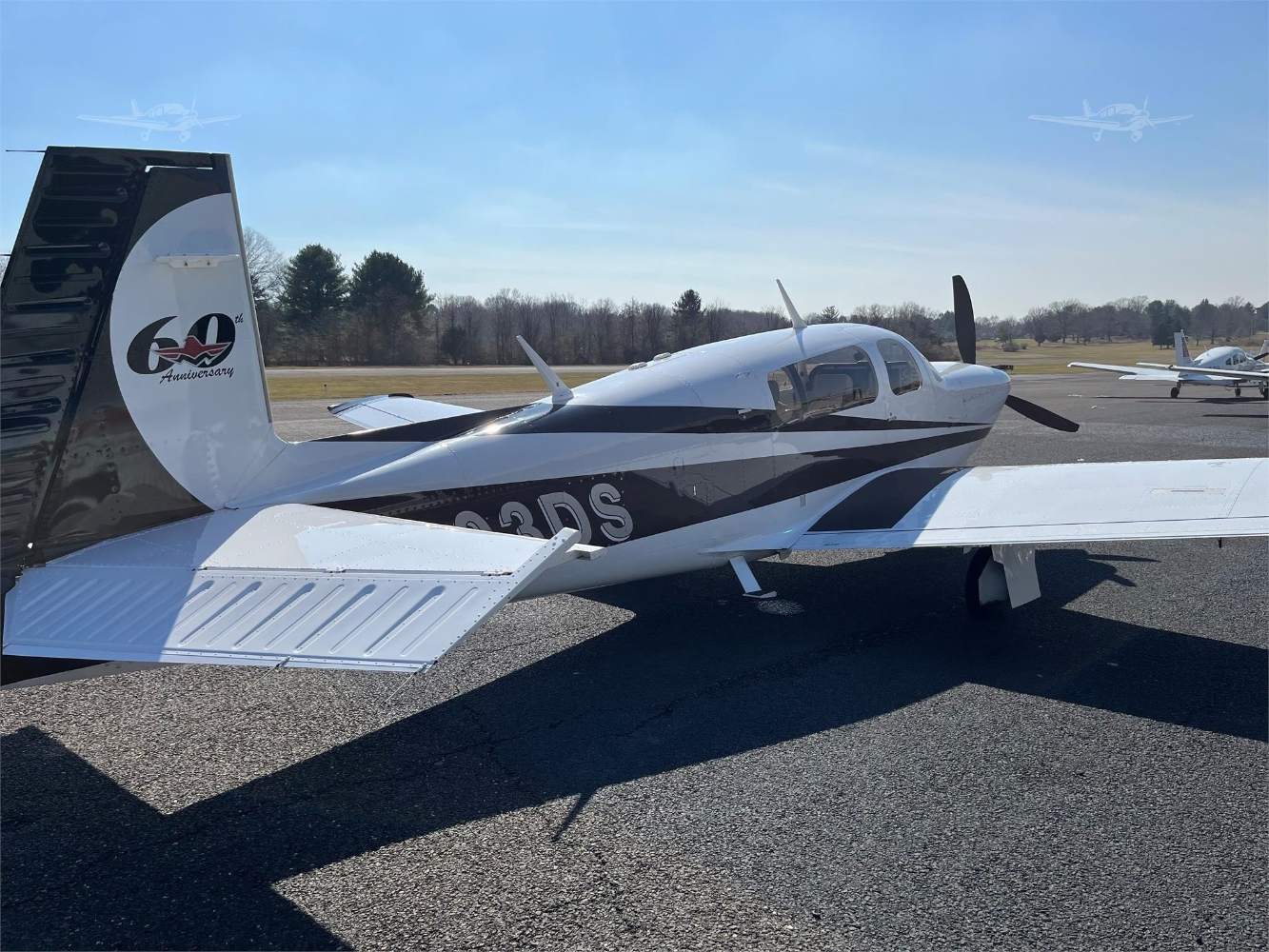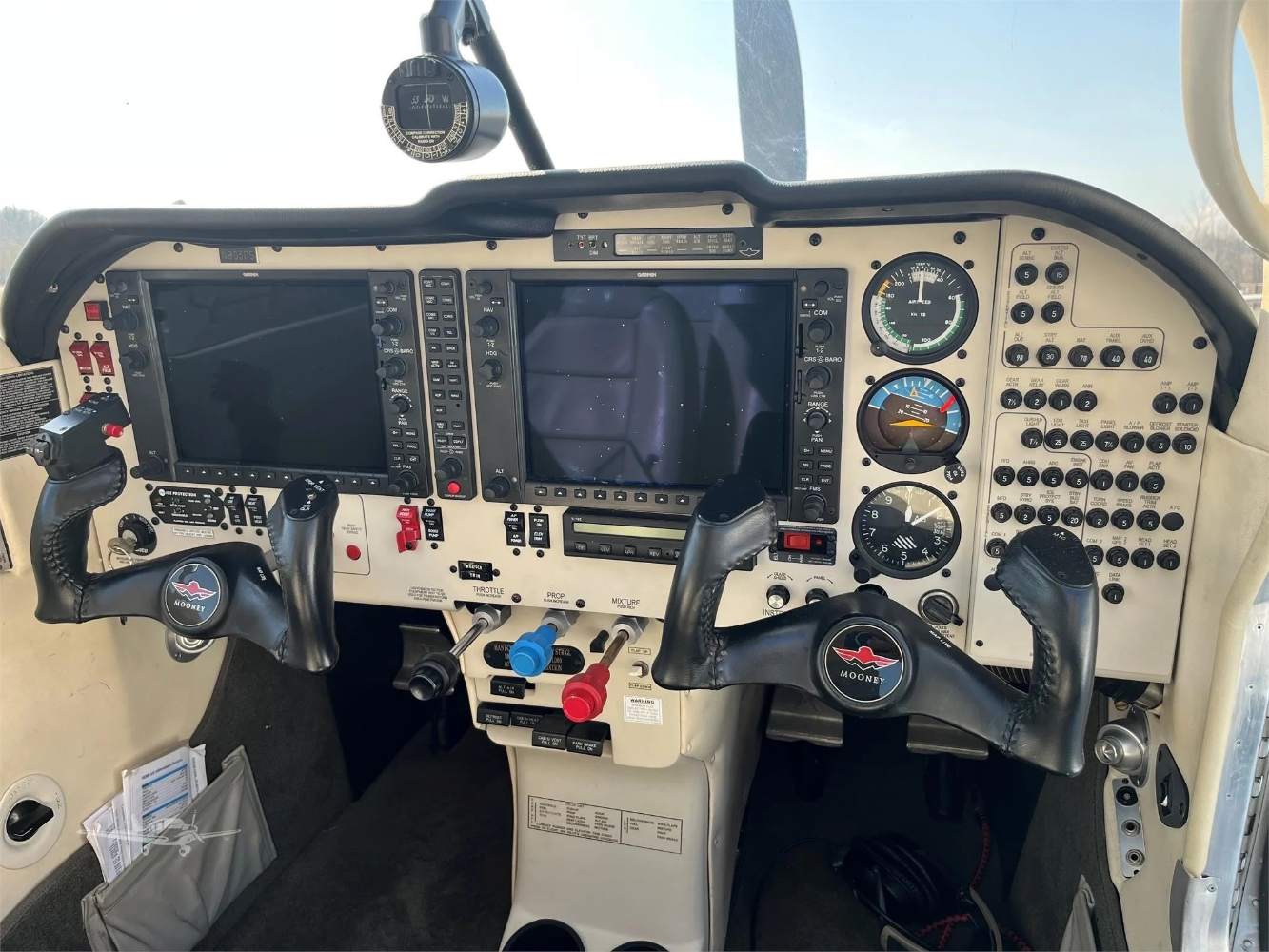
Steve Parker
Verified Member-
Posts
26 -
Joined
-
Last visited
Content Type
Profiles
Forums
Blogs
Gallery
Downloads
Events
Store
Everything posted by Steve Parker
-
Thanks for the response. I had a vague idea that it might be gasses built up over time, but wouldn't the first explosion have burned up the built-up hydrogen gas? The second backfire was two hours or so after the initial backfire and sounded the same loud "Boom!" I disconnected the trickle chargers after the first 'backfire'.
-
Help! 2006 M-20R Ovation hangered at Hermann, MO. During an airport open house on a warm day (temp in the 70's) I turned on the master switch to show an interested pilot my G1000 system. There's no avionics master switch, just the master power. The engine was cold, mags off, the keys were not in the mags keyhole. Then, finished with the G1000 demo, I turned off the master power switch and "BOOM", there was an instant, loud 'backfire' noise from behind and below me in the region of the battery compartment. I wondered if it was some relay or the batteries making the backfire noise, but it's loud! I knew it wasn't an engine 'backfire' since the sound was in the region behind and below me, not from the exhaust pipes under and forward of my feet. Besides, the engine hadn't been run in three months and was not involved. I instantly suspected something to do with one or both of the batteries, which were always on a trickle charger. I disconnected the trickle chargers and a couple hours later, again turned on the master power switch on to again demonstrate the G1000 display. When I turned off the master switch it again, instantly had a loud "BOOM" 'backfire-type sound below and behind the passenger compartment. My avionics guy said he'd look at it but he's been working out of the area and I'm in a rural area in Hermann, MO. I'm hesitant to even run the engine or turn on the power. It's back on the trickle chargers to keep the batteries topped up. I haven't turned on the power since as I don't want to risk a fire. Suggestions? Ideas? Advice on what to do or how to troubleshoot or who to call? Any help is appreciated. Have a safe, successful, happy, healthy New Year.
-
I have a 2006 M20R Ovation with a legacy G1000(WAAS upgrade in 2018). My MFD shows Class B airspace segments on the map but not their altitude limits. How do I turn that labeling on? I'm pretty sure they wouldn't make you carry a paper sectional to determine the individual section limits. Thanks in advance for the answer.
-
I bought a 2006 M20R Ovation this summer and the Mooney service center that did my prebuy (to have an uninterested third-party evaluation) said the avionics were all working well (but didn't actually check it out, instead just asked the seller ). I have a Garmin G1000 with the 2014 WAAS upgrade and when I started my instrument proficiency training rides the STEC 55X autopilot did not function correctly. It does direct nav and altitude change and altitude hold but the GPSS fails every time I try to engage it and the autopilot goes off on wild climbs/dives/banks during ILS, etc., even after established on localizer and glideslope, making me have to disconnect the autopilot and hand-fly to reacquire LOC/GS. Who is the best to sort out repair/upgrade of my autopilot situation, Sarasota Avionics? If a Garmin GFC 500 autopilot will work with my G1000 (or maybe have to add a G5) better than an STEC 55X? Will the GFC 500 make my tasks easier during IMC approaches? Thanks
-
Recently bought a 2006 M20R Ovation with the 310 hp upgrade. Just under 800 hours TT engine and airframe. I've been spending all my time and energy trying to figure out my STEC 55X autopilot but avionics guys in Peoria confirmed its GPSS feature is broken. I'm flying my wife to the Chicago area tomorrow morning and back Saturday. When I flew to Peoria yesterday at 6,500' I leaned it out to smooth the operation and bring the temps to what seemed the best setting on the G1000 (EGT white arc on one side, CHT mid-green). Is this okay for the engine? At this point, having spent all my time regaining instrument proficiency after 30 years out of the cockpit I don't care for this trip if I burn more gas, I just want to do the right thing for long, safe engine life. Is ROP with EGT white arc on one side, CHT mid-green, smooth engine operation good for the engine or do I need to run LOP for long engine life? If so I'll start watching LOP videos. As I said, I could care less if I burn a few gallons more on this trip but I don't want to build up carbon or otherwise harm the engine. Thanks in advance for your advice.
-
Thanks for the advice. My Mooney doesn't have an avionics master switch, just a master switch so the G1000 initialize even before engine start which gives me engine readouts during engine start. I've delayed turning on the autopilot power switch until established in cruise climb and yet, unlike yours, it gives all the problems I described. Recycling the autopilot power doesn't correct it either. I'm glad you solved your problem without having to incur instrument repair. Sadly, mine seems not so easy to fix.
-
I bought a 2006 M20R Ovation with G1000 and a 2014 WAAS upgrade and a STEC 55X autopilot. We flew it down to Missouri and I just got my instrument proficiency check. I have an STEC 55X user guide that came with the aircraft, I downloaded another more recent one, and I found a better focused manual for the old G1000 + STEC 55X setup in Cirrus aircraft when their G1000 had the legacy configuration with the same controls as mine. I studied the manuals to walk through step by step. In shooting approaches, I first noticed every time I followed the procedures to engage the GPSS, it showed "GPSS FAIL" on the STEC and the command steering bars disappeared. Even following each of the manuals step by step in flight, no luck. So, after being unable to engage GPSS, we tried to shoot regular ILS and VOR approaches. I initiated the approaches as specified and it followed it for a bit then it commanded turns and climbs/descent that threw the approach out the window. I had to disconnect the autopilot and hand-fly using the CDI and glideslope marker. I'm following the manual and G1000/GPSS guidebook procedures to the letter so it's not me not "activating" approaches or not knowing the difference in selecting "Vectors" or "specific entry point". I need to 1) get the ILS/VOR/etc. approaches working as coupled approaches, 2) get the STEC to engage GPSS mode without failing, and 3) get GPS approaches working. Any suggestions? I'd also like to find a course or instructor for learning the G1000. I have the Max Trescott G1000 handbook and it's helpful on G1000 procedures but not on the STEC 55X at all. I think I need an instrument expert to sort out my STEC 55X-G1000 link. Help me, Obi Wan!
-
Getting back into the cockpit after decades since flying big stuff, I need to get the landing attitude fixed in my mind. I tend to stop my round out too soon, thinking my nose is at the proper attitude when it needs to be a bit higher. The LHS system helps in this because it provided height above runway during the flare which is usually my highest focus. The LHS allows me to put a far greater part of my attention on completing the round out and flare attitude. Will the attitude picture soon become ingrained and need no conscious attention? Sure. But there's the unexpected gusts that balloon an otherwise good approach. As I correct for the gust it's nice that the height is called out so I can put my attention to alignment, power and other corrections it might need, etc. Rain, night, poor visibility, knowing in the dark when I sail over that line of unlit trees near the runway. In all of these, it's helpful to have an aide in one portion of what demands my attention. For me it's like pre-solo landings in 1979 in the Champ. It's just alignment and drift correction but initially it felt I was all over the sky and a frightful danger. But once alignment (or was it drift) became unconscious I had plenty of brain-space open to handle wind drift correction. Then it seemed east, too easy, almost like on ambu- The LHS system automates judging height through the flare and landing which allows my mind more brain-space for my other tasks of the landing. For severe clear, calm weather the LHS will become less important, but I will feel it worth many times it's purchase price on short final of a bad-weather, night precision approach in gusty, swinging crosswinds with rain and poor visibility. It's one less thing to focus attention on at a very busy moment. Just my opinion. Your results may vary. By the way, can anyone tell me why I have fewer instruments than the Champ and what these crappy black mirrors on the panel are for?
-
That would be me, ex-military pilot, ex-airline. Having this system, especially when transitioning to the new aircraft, or with a narrower/wider than usual runway, or reduced visibility or light, it's a nice assist. It's like having another pilot to run checklists. Yes, I can run checklists myself and I mentally review them but I take help where it's useful. Both my angle of attack HUD and my LHS are part of my scan that allows my head to be "out of the cockpit" in a critical phase of flight as a single pilot. Others may feel it unnecessary. Neither are correct. It's a personal preference. I don't 'need' my G1000 either. I have thousands of hours with steam gauges, but I prefer to use the newer equipment. We all have some aspect of flying technique that grabs our interest. Leaning techniques, self-done maintenance, upgrading or restoring, instructing.
-
We calibrated the LHS this morning in a few minutes over the practice area. The procedure was quick and straight-forward. This afternoon I beat up the pattern and the system was everything I hoped for. Outstanding device. Thanks for inventing this marvelous piece of gear.
-
PROBLEM SOLVED, I FOUND A LOCAL CFI DUE TO THE HELP OF THE MOONEY COMMUNITY FOLKS! Thanks so much for your kind help. Original post said: I need the advice of Mooney drivers. I just bought a 2006 M20R Ovation 3 with 310hp. I have 2,300 hours in big stuff back in the 1980s and early 90s. Having no time in Mooneys, I need five hours dual instruction before my insurance allows me to solo. I have funny black mirrors on the instrument panel but where are the steam gauges? Anyway, she’s in Lapeer, Michigan, Dupont-Lapeer Airport, D95. That’s 23 miles east of Flint, Michigan, and twice that north of Detroit, and I need some Mooney-wise CFI to get some hours before I bring her home to mid-Missouri. Ideally, someone could meet me at D95, shuttle it to their home field and do some hours there before I wing off for home, with or without someone going with me. Anyone know an experienced Mooney CFI who isn’t running off to Oshkosh who wants to help me ferry my ‘new’ bird and give some instruction on the care and feeding of Mooney? Steve Parker
-
@Microkit, I'm amazed at your excellent and quick response in sending out my components so I can install them this week (before the avionics guy goes on vacation next week). Your kindness and consideration in going the extra mile is greatly appreciated. Transitioning to the Mooney for the first time, your product will help me in getting the proper flare sight picture and even after landings become second nature, it will be a wonderful safety aid in reduced visibility, twilight and night landings. Again, your extra effort is appreciated.
-
Just bought a 2006 M20R Ovation 2 with everything I want (FIKI, glass, O2) but momma wants air conditioning. It's almost always going to be just me and her so weight isn't as much of a problem. I don't want some lackluster half-measure, but something that will work like factory air. Mid-Missouri by the Missouri River gets steamy in the summer. Suggestions?
-
I haven't read all 14 pages of this thread but the first posts from a couple years ago say the installer must select in the Wi-Fi setup for the minimum callout to be 1' or it will be 20'. Is that still true? Must the installer set max to 100' lest it be lower? Second question: How well does the LHS perform in reduced visibility due to rain, fog. I'm guessing fog locks the laser. I certainly don't wish to go below DH without the runway environment in sight, but as a last-ditch, 'everywhere is fogged in' low fuel no-options situation in fog, does fog prevent the LHS performance? With the Garmin displaying the runway in synthetic vision and a LHS system calling altitude, one might have some emergency options in a zero-zero situation. Please don't lecture me about flying to an alternate. I've thousands of hours and this is a hypothetical situation where no alternatives exist, as in engine failure above fogged-in conditions.







